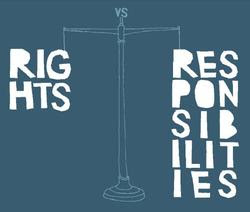Question 5: Digital Rights and Responsibilities

DIGITAL RIGHTS AND RESPONSIBILITIES: Mobile Phones: Acceptable Use Policy Purpose: Due to the widespread ownership of mobile phones among young people and students requires that school staff, students, parents and carers take steps to ensure that mobile phones are used responsibly at school. This Acceptable Use Policy is designed to ensure that potential issues involving mobile phones can be clearly identified and addressed, ensuring the benefits that mobile phones provide can be enjoyed by our students. The following Acceptable Use Policy for mobile phones provides that school staff, students, parents and carers guidelines and instructions for the appropriate use of mobile phones during school hours. The Acceptable Use Policy for mobile phones also applies to students during school trips, residential and extra-curricular activities both on and off school site. Students and their parents or carers must read and understand the Ac...


